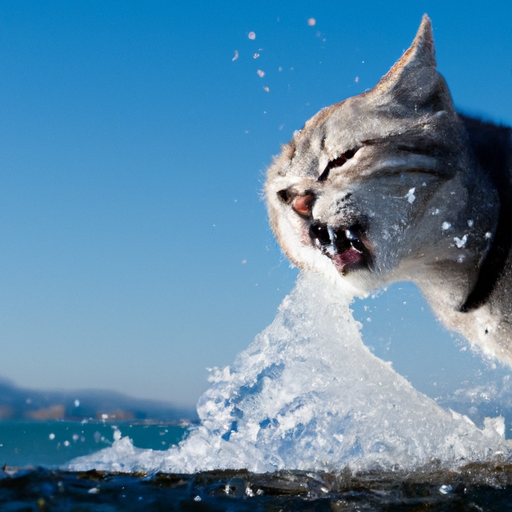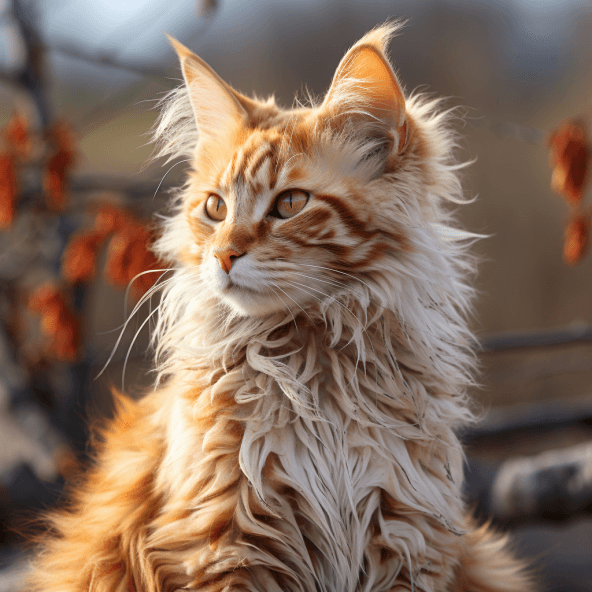How Often Do Cats Go Into Heat?
Have you ever wondered just “How Often Do Cats Go Into Heat”, especially if you’re a new cat owner? This detailed article is just what you need! It offers exhaustive information concerning your feline friend’s heat cycles, explains the symptoms to observe, and provides valuable advice on handling these scenarios. With this knowledge, not only will you understand your furry companion better but also ensure they are comfortable and healthy. So, let’s jump right into the feline world and unravel the mysteries behind cat heat cycles!
Understanding Cat Reproductive Cycle
As a cat owner, it’s essential to understand your cat’s reproductive cycle. This can help you prepare for any significant changes your cat might undergo and enables you to provide the best care possible.
Basics of feline reproductive system
**The reproductive system in cats is designed for reproduction and the bearing of offspring, just like in other animals. It’s composed of two main parts: the ovaries, where eggs are produced, and the uterus, where the kittens grow before they are born. Hormones control the whole process, signaling to the body when it’s time for ovulation and reproduction. Understanding how this system works can help you better understand your cat’s heat cycles and their overall health.
Differences between male and female cat reproductive cycles
The reproductive cycle differs distinctly between male and female cats. **In males, spermatogenesis, the production of sperm, happens throughout the year. However, the number of sperm can decrease during winter, which implies a somewhat seasonal fertility.
On the other hand, a female cat, known as a queen, doesn’t have a reproductive cycle in the same way that humans do. Instead, they go through various stages of the reproductive cycle known as the queen’s cycle. The most commonly recognized of these stages is ‘heat,’ also known as estrus.
Defining Cat Heat
The term “cat heat” or “estrus” refers to the stage in the cat’s reproductive cycle when she’s receptive to mating.
Scientific explanation of cat heat
In the scientific terminology, cat heat, or estrus, is the stage in the cat’s reproductive cycle where the female is receptive to mating. At this time, the queen releases multiple eggs over several days, making her fertile and capable of bearing kittens.
Symptoms and signs of a cat in heat
A cat in heat can show a range of signs. Some common indications include increased affection or neediness, constant meowing or yowling (often very loudly), rolling on the floor, presenting the rear end, and marking behaviors. These behaviors are an indication of the cat’s body gearing up for procreation and her attempts to attract a mate.

Frequency of Cat Heat Cycles
How frequently a cat goes into heat can vary depending on numerous factors.
Average frequency of heat cycles in cats
On average, a typical domestic cat will go into heat every two to three weeks during breeding season. This cycle can last anywhere from one to seven days.
Factors affecting the frequency
Factors like the breed, the cat’s age, and the time of year can all significantly influence the frequency of heat cycles.
Breed Variations in Heat Cycles
It’s essential to mention that heat cycles can vary significantly between different cat breeds.
Breed-specific heat cycle lengths
Some breeds tend to have longer or shorter heat cycles than others. For example, Siamese cats are known to have longer cycles, while other cats may have especially short or mild cycles which may go unnoticed by owners.
How breed may affect heat cycle frequency
In addition to affecting the length of heat cycles, breed can also determine frequency. Some breeds are known to come into heat more frequently, while others may have longer intervals between heat cycles.

Cat Heat Cycle by Cat’s Age
The age of your cat can also play a significant role in its heat cycles.
When do kittens start to go into heat
Kittens as young as four months old can start going into heat, though typically it’s more common around six to nine months of age. You may notice the signs of heat becoming more pronounced as your kitten matures into adulthood.
How often mature cats go into heat
Mature cats usually go into heat every two to three weeks during breeding season unless they become pregnant.
Elderly cats and heat cycles
Older cats, on the other hand, might not show the classic signs of heat as often as younger ones. However, they can still go into heat and even become pregnant unless they are spayed.
Seasonal Influence on Cat Heat Cycles
The timing and frequency of your cat’s heat cycles can also be influenced by the season and environmental conditions.
Influence of daylight hours
Daylight hours can play a big role in triggering the onset of a heat cycle in cats. Cats are “long-day breeders,” meaning that longer daylight hours can stimulate their reproductive hormones, leading to more frequent heat cycles.
Temperature effect on cat heat cycles
Similarly, warmer temperatures can also induce more frequent heat cycles in cats. This is because warmer temperatures and longer days typically signify a more abundant time of year when it’s ideal for raising kittens.
Behavioral Changes During Heat
Your cat’s behavior can significantly change during heat, which can occasionally be quite challenging for owners.
Common behavioral changes in cats during heat
During heat, cats often become more affectionate, vocal, and active. Some may also show enhanced marking behavior, and physical signs like a lower appetite or minor weight loss.
How to cope with a cat in heat
Handling a cat in heat can be demanding. The best way to cope is to provide plenty of patience and comfort. Some cats might crave more attention, while others may want to be left alone. Depending on the cat, distraction with toys or additional playtime might also be helpful.
Health Risks Associated with Frequent Heat Cycles
Frequent heat cycles can put a strain on a cat’s health both physically and mentally.
Physical health risks
Physically, cats that go through frequent heat cycles without becoming pregnant can be at risk of developing health issues like pyometra, an infection of the uterus that can be life-threatening if untreated.
Mental health implications
Mentally, the constant hormonal fluctuations that come with frequent heat cycles can lead to stress and anxiety in some cats.
Preventing or Managing Cat Heat Cycles
There are a few ways in which you can prevent or manage your cat’s heat cycles to ensure their health and wellbeing.
Methods for preventing heat cycles
The most effective way to prevent heat cycles is to spay your female cat. This surgical procedure removes the reproductive organs, completely stopping the heat cycles.
Benefits and risks of spaying a cat
Spaying has numerous benefits, including the prevention of pyometra and ovarian cancer, as well as reducing the stress associated with heat cycles and unwanted pregnancies. However, as with any surgery, spaying carries a small risk of complications like bleeding, infection, and reactions to anesthesia.
When to Seek Veterinary Attention
Knowing when to seek veterinary attention can be crucial in ensuring your cat’s health during their reproductive years.
Signs of problems during a heat cycle
If your cat seems to be in perpetual heat, loses a significant amount of weight, or shows signs of pain or discomfort, then it’s time to seek veterinary care.
Dealing with health complications related to heat cycles
If your cat is experiencing complications related to their heat cycles, it’s crucial to follow all the recommended steps provided by your vet. This can involve medication, a tailored diet, or even an advanced procedure like spaying.
Remember, understanding your cat’s reproductive cycle can help you provide the best possible care. It all comes down to being attentive, responding to their needs, and seeking the wisdom of your vet whenever you’re uncertain.







